
Jupiterimages/Photos.com/Getty Images
The thick layers of skin called calluses form as your body’s natural protection from friction and daily pressure. They often occur on hands or feet as a result of repetitive friction (e.g., gripping weights at the gym) or from wearing ill-fitting shoes that rub on the same part of the foot over and over. There are creams you can purchase at the drugstore to treat them, or you can do a simple at-home remedy using natural oils.
Calluses and your Health
Calluses aren’t pretty, but they’re also not dangerous -- unless you have diabetes which can cause issues with circulation in your feet. They usually aren’t painful, unless they’re rubbing up against a bone or a nerve on your foot. If not treated, calluses can become corns, which have a hard center core. Regardless of whether you have health concerns or your concerns are more esthetic, you’ll likely want to find a way to remove calluses on your feet.
The Filing Method
One way to remove calluses and reduce the pressure they’re putting on the nerves is to scrub the dead skin cells away using a pumice stone right after you step out of the shower or bath. Don't remove all of the callus at once: this could leave skin raw and susceptible to infection. Instead, scrub a little bit of the dead skin away each day. A very thick callus could take two weeks to wear away.
The Oil Treatment Method for Calluses
Another way of treating calluses is by applying a DIY treatment made of lotion and natural essential oils which will help to moisturize calluses, causing them to become soft. One effective recipe can be made using a thick store-bought foot lotion, ten drops of peppermint oil and ten drops Roman chamomile oil. While peppermint oil helps reduce redness and inflammation, Roman chamomile oil reduces tension, pain and discomfort.
The Oil Treatment Method for Corns
If a callus has turned into a corn, the editors at Best Health magazine recommend treating it by soaking and moisturizing it with castor oil until it becomes soft. Use a cotton swab to dab a couple of drops on the corn and cover it with an adhesive pad, which can be purchased at the pharmacy. If the corn is on your toe, cover it with a non-medicated round pad with a hole in the middle, using adhesive tape to hold the pad in place. Wear old socks when you’re doing this since castor oil can stain.
Related Articles

Natural Ways to Remove Stubborn Corns & ...
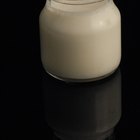
Home Remedies to Cure Foot Fungus

How to Break in a Pair of Dr. Martens
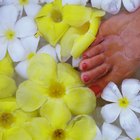
How to Make a Cuticle Exfoliate

Can You Remove Calluses With Lemon ...
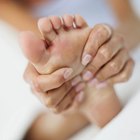
How to Get Smooth & Soft Hands & Feet

Running & Corns

How to Get Dark Ankles Lighter
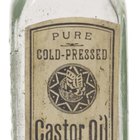
Castor Oil Home Remedies

Aquaphor for Dry Feet

Do Pumice Stones Work for the Knees?

The Best Ways to Get Dead Skin Off of ...
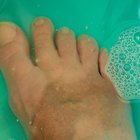
Uses for Vinegar on Toes
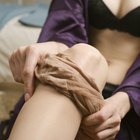
How to Put On Seamless Pantyhose
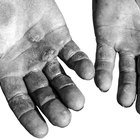
Callus From Pullups

How to Keep Flip-Flops From Slipping
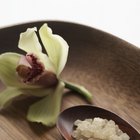
How to Use Sea Salt for Cracked Heels ...

How to Keep Eyeglass Nose Pieces From ...

How to Have Flawless Armpits
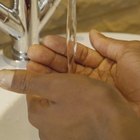
Subungual Warts and Treatment
References
Writer Bio
Chloé Baudin has been a health and lifestyle writer and editor since 2008. She has contributed to online and print magazines, covering personal finance, home decor, travel, preventative health, sports, science, technology, psychology and relationships.
Photo Credits
Jupiterimages/Photos.com/Getty Images